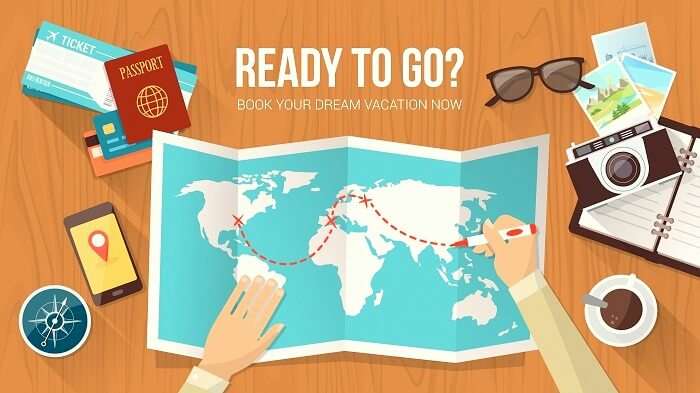Are you ready to start planning your budget-friendly trip? Let’s get started!
Step 1: Determine your budget
The first step in planning a budget-friendly trip is to determine your budget. This will help you to set realistic expectations and avoid overspending. To determine your budget, consider the following factors:
Transportation: How will you get to your destination and how much will it cost?
Accommodation: How much can you afford to spend on accommodation per night?
Food: How much will you budget for meals and snacks each day?
Activities: What activities do you want to do and how much will they cost?
Once you have a general idea of these costs, you can determine how much you can afford to spend on each category and adjust accordingly.
Step 2: Choose your destination
Choosing a budget-friendly destination is key to saving money on your trip. Some destinations are naturally more expensive than others, so it’s important to do your research and choose a place that fits your budget. Consider the following factors when choosing your destination:
Seasonality: Traveling during peak season can be more expensive, so consider traveling during the off-season for lower prices.
Currency exchange rate: Look for destinations where the currency exchange rate is in your favor.
Cost of living: Consider the cost of food, accommodation, and activities in the destination you’re considering.
Step 3: Create an itinerary
Creating an itinerary can help you stay organized and avoid overspending. When creating your itinerary, consider the following:
Plan activities that are free or low-cost: Look for activities that don’t require a lot of money, such as hiking, sightseeing, or visiting local markets.
Plan your meals: Plan your meals in advance to avoid overspending on food.
Leave room for flexibility: Allow some room in your itinerary for unexpected expenses or opportunities.
Step 4: Book your travel and accommodation
Booking your travel and accommodation in advance can help you save money. Consider the following when booking:
Look for deals: Check for deals on flights, hotels, and activities before booking.
Consider alternative accommodation: Look for alternative accommodation options such as hostels or vacation rentals for cheaper options.
Be flexible: Consider traveling on weekdays instead of weekends for lower prices.
Step 5: Plan for transportation and activities
Transportation and activities can be some of the biggest expenses when traveling. Consider the following to save money:
Use public transportation: Public transportation is often cheaper than taxis or rental cars.
Look for free activities: Look for free activities such as museums, parks, and walking tours.
Buy attraction tickets in advance: Buying attraction tickets in advance can often save you money.
Examples of Budget-Friendly Trips
Road trip on a budget
A road trip can be a budget-friendly way to see the country. By packing your own food and camping or staying in budget-friendly motels, you can save money on food and accommodation. Look for free activities such as hiking or visiting national parks for entertainment.
Backpacking in Southeast Asia
Southeast Asia is known for its budget-friendly destinations. By staying in
Choose Affordable Accommodation Options
Once you have decided on your destination, it’s time to start researching affordable accommodation options. Some great options for budget travelers include hostels, Airbnb rentals, camping, or couchsurfing. These options can often be much cheaper than traditional hotels, and they also offer a more authentic travel experience.
Research Free Activities and Attractions
Another great way to save money while traveling is to research free activities and attractions in your destination. Many cities offer free walking tours, museums, and parks that can be enjoyed without spending a dime. Additionally, many popular tourist attractions offer discounted rates on certain days of the week or during certain times of the year, so be sure to research these options before you go.
Eat Like a Local
One of the biggest expenses while traveling can be food. However, by eating like a local, you can often save a significant amount of money. Avoid expensive tourist restaurants and instead seek out local eateries, food markets, and street food vendors. Not only will the food be more authentic, but it will also be much cheaper.
Use Public Transportation
Another way to save money while traveling is to use public transportation instead of taxis or rental cars. Many cities offer affordable public transportation options, such as buses, trains, and subways. Not only is this option cheaper, but it also allows you to experience the local culture and see more of the city.
Be Flexible
Finally, one of the most important things to remember when planning a budget-friendly trip is to be flexible. This means being open to changing your itinerary if a better deal arises, being willing to travel during off-peak seasons, and being open to trying new things. By staying flexible, you can often find incredible travel deals and have a more authentic and enjoyable travel experience.
In conclusion, planning a budget-friendly trip is all about being strategic and doing your research. By following these steps and being mindful of your spending, you can have an incredible travel experience without breaking the bank. So start planning your next adventure today and remember to always keep your budget in mind!




